12 Benefits Of Cranberry Juice, Nutrition, & Side Effects
Besides being a great mixer, this juice can steer you towards a healthy life!
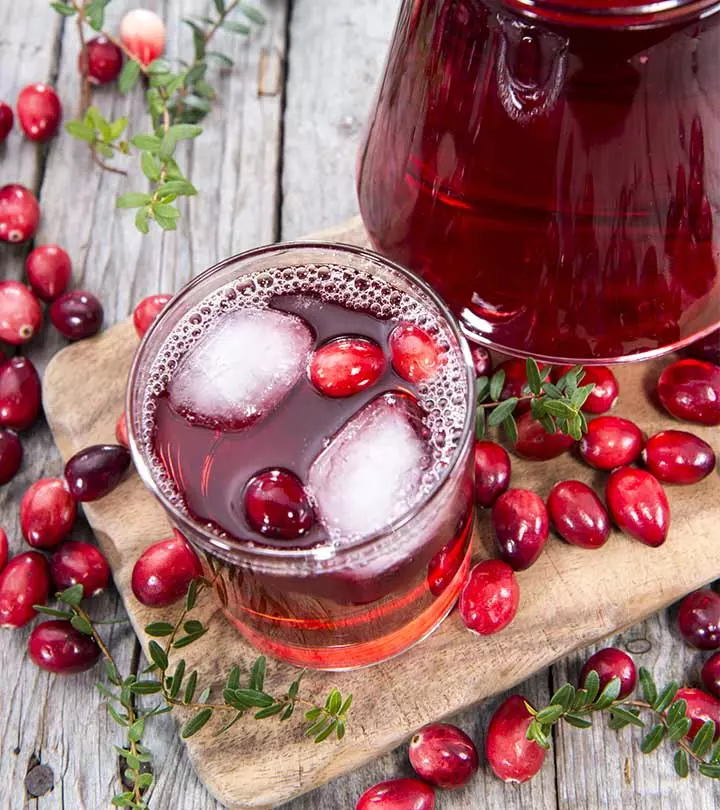
Image: Shutterstock
Cranberries are a boon straight from heaven! Be it their look and feel, taste, or benefits, cranberries are the best of all berries. These deep red beauties are a common sight in many kitchens because of their health benefits. And these are not specifically for the holiday season, include this in your meal all year around.
You can make jams, spreads, dips, and whatnot with these delicious berries. But, one cranberry product that possesses equal therapeutic value as the fruit is cranberry juice. Pure cranberry juice benefits your heart, kidneys, liver, vagina, urinary tract, immune system, and GI tract in various ways.
Want to know more? Let’s explore how cranberry juice benefits your health and how it fares as a refreshing summer drink. Start scrolling!
 Know Your Ingredient: Cranberry Juice
Know Your Ingredient: Cranberry JuiceWhat Is It?
Liquid juice of cranberry that is loaded with essential nutrients.
What Are Its Benefits?
It may improve heart health, help manage liver disorders, and fight vaginal infections.
Who Can Consume It?
Anyone can drink cranberry juice except for people who are on medications such as anticoagulants, and immunosuppressants.
How Often?
It can be consumed daily in moderation.
Caution
Excessive consumption might lead to side effects such as mild stomach upset.
In This Article
What Is So Good About Cranberry Juice?
Cranberry juice is made from fresh cranberry produce, and it is a life potion. There’s more to it than its bright, deep red color and tangy tartness.
Unsweetened cranberry juice is a sour low-calorie detox drink, it might be sometimes a little bitter as well. The polyphenols, vitamins, and other active ingredients found in cranberries can also be found in its juice.
Scientific studies prove its therapeutic equivalence to cranberry, the fruit. Cranberry juice is a rich source of polyphenolic compounds, particularly anthocyanins (1).
Drinking two glasses of cranberry juice daily may also protect you from cardiovascular diseases. It also keeps diabetes, kidney troubles, and dental plaque at bay (2).
This juice may help in warding off fungal, yeast, and bacterial pathogens. It can effectively control chronic urinary tract infections and keep your intimate areas healthy (2).
So, is cranberry juice good for you? If yes, what is cranberry juice good for? In the following sections, we will discuss the benefits of drinking cranberry juice along with the scientific evidence to back them. Keep reading!
What Are The Health Benefits Of Cranberry Juice?
What does cranberry juice do? Let’s scroll down to know more.
Cranberry juice is good for you as it is packed with potent antioxidants like vitamin C. This nutrient is known to stimulate collagen synthesis and strengthen your immune system. Antioxidants in general can neutralize harmful radicals in the body, preventing cellular damage, and fighting off infections. Urinary tract infections (UTIs) may also be relieved with cranberry juice.
Jesse Feder, Clinical Dietitian at the Memorial Regional Hospital, says, “If consumed in moderation, cranberry juice can be a part of a daily healthy diet. Cranberry juice contains tons of healthy nutrients such as vitamin C, vitamin E, magnesium, vitamin B6, calcium, and iron. It also has strong antioxidants with several health benefits. These can help reduce inflammation throughout your body, as well as boost your immune system.”
1. Controls Urinary Tract Infections (UTIs)
Cranberry contains flavonoids, terpenoids, anthocyanins, catechin, and organic acids like citric, malic, quinic, benzoic, and glucuronic acids. Benzoic acid is excreted from your body as hippuric acid. This hippuric acid is identified to inhibit bacterial growth (3). It maintains the acidic pH of urine, making it difficult for the bacteria to survive.
Several controlled trials with women as subjects were conducted in which they were put on cranberry juice for 12 months. It was reported that cranberry juice decreased the recurrence of UTIs in these women (3).
In another study, 225 children were given cranberry juice and placebo for 6 months. The children who received cranberry juice needed less number of days on antibiotic therapy. But, the acidity of cranberry juice makes it less palatable to children (3).
These charts show that cranberries inhibit the growth of UPEC adhesion, the most common pathogenic bacteria that causes UTI. It represses the regulation or up-regulation of genes, increases iron, and helps with the metabolism. Propolis when included with cranberries results in better and faster UPEC adhesion.

The Effect Of Cranberry Against Uropathogenic Escherichia Coli
Source: Propolis potentiates the effect of cranberry (Vaccinium macrocarpon) against the virulence of uropathogenic Escherichia coli2. Boosts Heart Health
The active ingredients of cranberry juice have vasorelaxing properties. In simpler terms, drinking cranberry juice can relax the stiff blood vessels in your body. Thus, it lowers blood pressure or hypertension. This property of cranberry juice was proven in rat and pig studies (4), (5).
A study was conducted on 30 women and 26 men, who were given 8 oz. of low-cal, sucralose-sweetened cranberry juice or identical placebo. After 8 weeks, the volunteers who were given cranberry juice had lower levels of 5 out of the 22 indicators of cardiometabolic riski A group of interrelated risk factors concerning both heart-related and metabolic disorders such as diabetes. in their blood (6).
That means they had a lower combined risk of cardiovascular disease (CVD), diabetes, and stroke (6).
Jesse Feder says, “Cranberry juice can be good for clogged arteries. This is because cranberry juice contains high amounts of antioxidants. These antioxidants can help decrease inflammation throughout the body, including your arteries. This can potentially reduce blood pressure, and stress put on the arteries themselves.”
If you are looking for a heart-healthy meal, add a glass of cranberry juice to your daily diet.
3. Improves Dental Health And Hygiene
Cranberry juice creates a protective layer on your teeth. The cranberry juice-film makes it difficult for the bacteria that cause cavities to cling to the surface of your teeth (7).
Glucan is the building block of plaque. Oral bacteria utilize glucan to build dental plaque. Ultimately, the plaque covers your teeth and triggers decay. However, cranberry juice disrupts the formation of glucan (7).
Cranberry juice prevents bacteria from forming plaque by inhibiting these enzymes. When added to dental products, this juice can also stop additional bacteria from adhering to the surface of your teeth (7).
Try to get your hands on organic, and non-GMO cranberries for better benefits.
4. Prevents Kidney Calcification And Infection
Cranberry juice is a traditional remedy that has been used for decades to treat UTIs and kidney conditions.
The active ingredients of cranberry can inhibit the adherence of pathogens (8).
A 2003 study conducted on healthy males reported a positive effect of this juice. Drinking about 500 ml of cranberry juice a day reduced oxalate excretion in these males. The oxalate ions interact with calcium and form calcium oxalate kidney stones (8).
This study also found that phosphate ion excretion decreased while citrate increased. Together, oxalate, citrate, and phosphate control the calcification of kidneys. Hence, drinking this juice can prevent chronic kidney disease (CKD), kidney calcification, nephritis, and other kidney diseases (8).
5. Mitigates Liver Diseases
Recent mice studies have reported that cranberry extract can decrease lipid accumulation in the liver. It was found to prevent the build-up of oxidative stress in high fat-fed mice (9).
A daily dose of cranberry extract can improve blood cholesterol and lipid profile in humans. As a result, the HDL levels of subjects fed on this extract are higher. The expression of anti-inflammatory genes and substances goes up too (9).
Dietary supplementation of cranberry extracts can mitigate liver diseases. These include non-alcoholic fatty liver disease (NAFLD), steatohepatitis, and cirrhosis. Such foods ensure these conditions do not progress to hepatocarcinomai A common type of liver cancer occurring in people with chronic liver illnesses, such as hepatitis B or C infection. and other cancers (9).
6. Possesses Strong Anti-inflammatory Properties
Research has found that intake of low-calorie cranberry juice reduces the biomarkers of inflammation. Daily consumption of this juice or cocktail lowers the level of C-reactive protein (CRP) in your body. CRP concentration in your blood usually increases when there is inflammation (10).
Several in-house anti-inflammatory enzymes (like glutathione peroxidase, phospho¬-c-Jun-N-¬terminal kinase) levels are boosted, thanks to the polyphenols found in cranberry juice (10).
Drinking cranberry juice can, therefore, reduce the severity of chronic and acute inflammatory disorders. These include atherosclerosisi Blockage of arteries caused by the accumulation of lipids, cholesterol, and other compounds on the arteries' walls. , rheumatoid arthritisi An autoimmune inflammatory disease affecting the joints, causing inflammation, pain, and swelling. , Alzheimer’s diseasei A progressive neurological disorder that causes the brain to shrink and brain cells to die, leading to dementia. , Crohn’s diseasei A type of IBD that causes swelling of the tissues in the digestive tract, leading to abdominal pain, severe diarrhea, and weight loss. , colitisi A type of IBD which causes inflammation and ulcers in the innermost lining of the large intestine, colon, and rectum. , periodontitisi Gum infection that damages the soft tissue and can destroy the bones that support the teeth. , UTIs, and diabetes. (10), (11).
7. Combats Vaginal Infections
Women are more prone to UTIs because their urethra is close to the vagina and anus. Also, it is shorter in length than in men. Escherichia coli causes most UTIs. These bacteria can easily travel from the anus to the urethra while urinating or during intercourse (12).
Therefore, it is imperative for women to monitor their vaginal health. Dietary changes can naturally boost immunity against several vaginal pathogens, and the various forms of cranberry are known to prevent UTIs.
Cranberry polyphenols, particularly proanthocyanidinsi Chemical compounds which give the fruit or flowers of many plants their red, blue, or purple colors. , are said to demonstrate this property. These proanthocyanidins decrease the adherence of E. coli and Candida fungus to uroepithelial and vaginal epithelial cells, thus preventing the aggravation of vaginal infections (13).
Hold That Thought!
Researchers do not have enough evidence to prove that cranberries are effective against UTIs.
A 2012 research review of 24 clinical trials concluded that cranberry juice and supplements don’t prevent UTIs. But, many of those studies were of poor quality.
The bottom line is that cranberry juice can only weaken the attachment of bacteria to the walls of your urethra, but not treat the infection thoroughly.
Therefore, it cannot be used as an independent treatment for chronic UTIs. This juice can only delay/manage the aggravation of such attacks.
8. Reduces Risk And Severity Of Diabetes
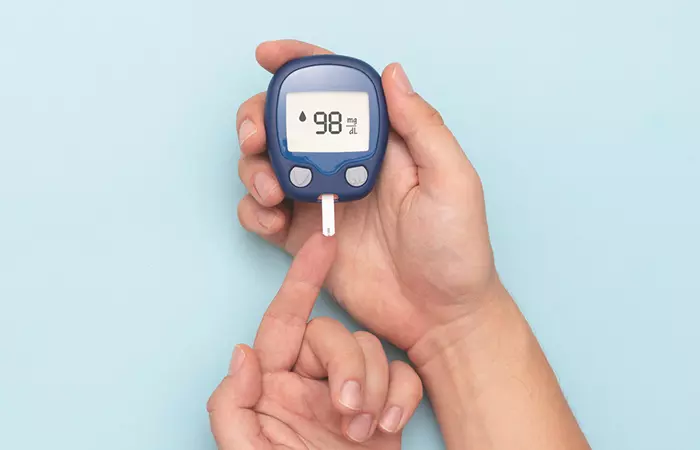
The fruit and vegetable intake of people with type 2 diabetes is typically low. This is probably because of its perceived adverse effect on glycemic control. Low-calorie cranberry juice can be a healthy way of increasing fruit intake in such cases (14).
In a study conducted on 58 males with type 2 diabetes, half of them were given a cup of cranberry juice per day, while the rest were served placebo. After 12 weeks, there was a significant decrease in serum glucose in the experiment group (15).
Elevated levels of LDL (bad cholesterol) are commonly seen in people with diabetes. The oxidation of LDL worsens diabetes. Thus, ultimately, cranberry juice can bring down the severity of diabetes. While at it, this drink can also reduce the risk of metabolic disorders (like obesity and CVDs) (15)
9. Prevent Bacterial Adherence To Urinary Tract
How do you think UTIs occur? It is an interesting model of bacteria-human cell interaction.
E. coli (bacteria) is the primary cause of most UTIs. Certain infectious strains of E. coli are covered with small hair-like projections known as fimbriae. Fimbriae act like hooks and latch onto cells that line the urinary tract, thus triggering the infection (16).
The best way to prevent such UTIs is to disturb the human-bacterial cell attachment. And that’s exactly what cranberry juice does! When exposed to cranberry juice, the fimbriae on E. coli cells curl up. Thus, the ability of the bacteria to cling to your urinary tract and infect it is reduced multifold (16).
That’s why unsweetened cranberry juice is one of the best remedies for UTIs and vaginal infections.
10. Is An Excellent Detox Drink
Cranberries contain abundant amounts of antioxidants, such as phenolic acids and flavonoids. Cranberry juice phenolics are also known to boost antioxidant capacity. Hence, it can effectively reduce oxidative stress (17).
Natural cranberry juice is rich in potassium, magnesium, phosphorus, and vitamins C, A, and K. Therefore, this summer drink is sure to replenish your body’s electrolytes and provide adequate hydration (18). But you can also try it during fall, spring, or winter as well, the healthy drink can benefit you all year long.
Pure cranberry juice is also said to aid weight loss. However, there is not enough scientific evidence to support this fact.
11. Improves Gut Health And Metabolism
Cranberry extracts can protect your gut health and digestion. This berry has potent antimicrobial activity that blocks pathogenic infections in your gut (19).
Cranberry juice may also inhibit the growth of Helicobacter pylori, Candida albicans, Staphylococcus aureus, Pseudomonas aeruginosa, and Escherichia coli (19).
Cranberry proanthocyanidins, flavonols, and hydroxycinnamic acids may prevent such bacterial adhesion and cause lesser biofilm formation, thus controlling inflammation in your gut (19).
These active ingredients also exert a prebiotic effect on your stomach lumen and boost the growth of gut microbiota. This is probably why cranberry juice is given when you feel nauseous. It is clear, rich in vitamin C, and settles your upset tummy (19), (20).
12. Might Affect Influenza (Flu Virus) Severity
Cranberry juice blocks the process of bacterial and human interaction. A 2005 study reported an active substance in this juice called NDM. This substance is said to interfere in the life cycle of the Influenza virus (21).
It is proposed that NDM can inhibit the adhesion and activity of this virus. The in-vitro findings suggest that NDM may target certain vital proteins of influenza virus (21), (22).
This juice may also prevent the development of secondary bacterial complications as it boosts the proliferation of immune system cells like NT cells, γδ-T cells, and so on (22), (23).
A glass of cranberry juice is a shot of health. It repairs, recharges, and rejuvenates your body. To top it all, its benefits have been experimentally proven.
 Trivia
TriviaThe active components behind these properties have been characterized and studied extensively. Now that we know why is cranberry juice good for you, take a look at its nutrition profile below for more info.
Nutritional Value Of Cranberry Juice
| Nutritional value per 1 cup (253 g) | ||
|---|---|---|
| Proximates | Unit | Quantity |
| Water | g | 220.44 |
| Energy | kcal | 116 |
| Energy | kJ | 491 |
| Protein | g | 0.99 |
| Total lipid (fat) | g | 0.33 |
| Asht | g | 0.38 |
| Carbohydrate, by difference | g | 30.87 |
| Fiber, total dietary | g | 0.3 |
| Sugars, total | g | 30.61 |
| Minerals | Unit | Quantity |
| Calcium, Ca | mg | 20 |
| Iron, Fe | mg | 0.63 |
| Magnesium, Mg | mg | 15 |
| Phosphorus, P | mg | 33 |
| Potassium, K | mg | 195 |
| Sodium, Na | mg | 5 |
| Zinc, Zn | mg | 0.25 |
| Copper, Cu | mg | 0.139 |
| Selenium, Se | µg | 0.3 |
| Vitamins | Unit | Quantity |
| Vitamin C, total ascorbic acid | mg | 23.5 |
| Thiamin | mg | 0.023 |
| Riboflavin | mg | 0.046 |
| Niacin | mg | 0.230 |
| Vitamin B-6 | mg | 0.132 |
| Folate, total | µg | 3 |
| Folate, food | µg | 3 |
| Folate, DFE | µg | 3 |
| Choline, total | mg | 8.3 |
| Vitamin A, RAE | µg | 5 |
| Carotene, beta | µg | 68 |
| Vitamin A, IU | IU | 114 |
| Lutein + zeaxanthin | µg | 172 |
| Vitamin E (alpha-tocopherol) | mg | 3.04 |
| Vitamin K (phylloquinone) | µg | 12.9 |
The two major classes of phenolics identified in cranberries are phenolic acids and flavonoids. The most abundant phenolic acid is benzoic acid. It is followed by hydroxycinnamic, p-coumaric, sinapic, caffeic, and vanillic acids (24).
The predominant flavonoids present in cranberries are anthocyanins, flavonols, and flavan-3-ols (particularly proanthocyanidins). The major anthocyanins are peonidin-3-galactoside, cyanidin-3-galactoside, cyanidin-3-arabinoside, peonidin-3-arabinoside, peonidin-3-glucoside, and cyanidin-3-glucoside (24).
Hyperoside, quercetin, myricetin, avicularin, quercitrin, and their glycosides are also present in cranberries. Seventy five percent of the flavonols in processed cranberry juice were found to be quercetin (24).
No wonder this drink is a detox A-lister!
With the best and most potent phytochemicals in town, cranberry has the highest antioxidant capacity (94.56 μmol TE/g). It ranks on top among 24 most commonly consumed fruits (24).
Wondering how to reap the benefits of cranberry juice? Why search elsewhere?
Scroll down to find a quick recipe to make this refreshing drink.
How To Make Cranberry Juice At Home
You must have had cranberry tart or heard about it during Thanksgiving, but its juice is equally tasty and more beneficial for your health. Here’s a super quick recipe for making cranberry juice at home. You can make it sweet or unsweetened. It is an amazing gluten-free and vegan option for a plant-based diet. This versatile drink can be played around with, and you can add a variety of fruits to give it your twist!
What You Need
- Cranberries: 1 quart
- Water: 1 quart
- Sweetener of choice: ½ to 1 cup (to taste) [Sugar, honey, pure cane syrup, agave nectar, or artificial sweetener]
- Boiling pot: Medium-large
- Strainer or muslin cloth
Let’s Make It!
- Pour the water and cranberries into a pot.
- Bring them to a low boil until the cranberries pop. This should take about 10 minutes.
- Drain the cranberry juice through a fine strainer into a container.
- Squeeze the berries to extract the juice.
- Let the juice to cool down.
- Serve fresh or chilled.
Cheers! You just made some fresh homemade cranberry juice!
You can add a dash of lemon or orange to this juice. Apples, tangerines, citrus fruits, other berries, and watermelon go well with this drink.
You can also blend milk and cereal to make a cranberry-flavored meal smoothie!
Mix some chilled cranberry juice with vodka. Just what you need on a Friday night to get happy high!
Sip on some cranberry juice while you read the last few sections of this article.
It’s so easy to make this low-cal drink that you may almost want to have it every day for breakfast. There are a few more cranberry recipes that you can try at home as well. Scroll down to learn them!
Cranberry Recipes
Sauce
What You Need
- 100 g sugar
- 100 ml orange juice
- 250 g cranberries
Let’s Make It!
- Pour sugar and orange juice into a pan.
- Mix and bring them to a boil.
- Stir in cranberries and simmer until they are tender.
- Let it cool before putting it in the fridge.
- Serve at room temperature.
Punch
What You Need
- 100 g cranberries
- 1 liter cranberry juice
- 500 ml vodka
- 400 ml grapefruit juice
- 2 limes, sliced
- Some ice (as needed)
Let’s Make It!
- Put one or two cranberries in each square of an ice cube tray.
- Fill with water and freeze until solid.
- Add cranberry juice, vodka, grapefruit juice, and limes into a punch bowl.
- Add half the cranberry ice cubes. Save the rest for glasses.
- Serve chilled!
But, there are some side effects of drinking too much cranberry juice. Find out what they are in the next section.
Does Cranberry Juice Cause Any Side Effects?
Drinking cranberry concentrate juice is generally safe. However, large amounts can cause an upset stomach. With time, it may also increase the risk of kidney stones (25).
High doses of cranberry and its extracts may also exhibit drug interactions. Blood thinners or anticoagulants are particularly reactive to cranberry juice. Drugs like warfarin, heparin, aspirin are examples of this class of drugs (25).
Immunosuppressive drugsi A class of drugs that inhibit or slow down the immune system's activity to prevent the body from rejecting a transplanted organ. like tacrolimus might also interact with cranberry extract. Such situations might arise especially in someone who has received an organ transplant (26).
Such drug interactions can cause blood pressure fluctuations. If left untreated, fruit/herb-drug interactions can be fatal.
So, what is a safe way to consume cranberry juice? What is the daily limit of this drink?
What Is The Recommended Dose Of Cranberry Juice?
Well, there is no set value or range for this.
Ideally, 1-2 cups of cranberry juice per day are recommended for UTI prevention. You can also take about 3-6 cups a day, but make sure it is pure, unsweetened, or less sweet, and low calorie as well (27).
The safety of cranberry juice for pregnant and lactating women is not clear yet. It is best to consult a gynecologist before taking the plunge.
Also, if you are diagnosed with a UTI, consult a urologist or a nephrologist. Give an explicit account of your food habits. This helps the doctor choose the right supplements and doses for you.
Infographic: How Cranberry Juice Benefits Skin And Hair
With a wealth of health benefits, cranberry rightfully claims the title of a super fruit. But did you know it can do wonders for your skin and hair health too? Check out the infographic below on how cranberry juice can give you enviable skin and hair. Illustration: StyleCraze Design Team

 Did You Know?
Did You Know?Cranberry juice offers numerous benefits if included as part of the diet. It is loaded with many beneficial nutrients. The juice can effectively manage urinary tract infections, flu, and vaginal infections. It reduces kidney calcification and infection, and helps improve your bladder health. It also can improve dental, heart, and liver health. In addition, it has anti-inflammatory properties and is an effective detox drink. Moreover, if you are looking for juices for glowing skin, then cranberry can be in your list. This juice can be easily prepared at home. However, excess intake may trigger undesirable side effects like an upset stomach and drug interactions. It also may increase the risk of kidney stones. Hence, moderate consumption is advised. Consult your doctor for more information.
Frequently Asked Questions
Can cranberry juice dissolve blood clots?
According to Jesse Feder, “Cranberry juice does contain a blood-thinning compound called salicylic acid and strong antioxidants. Salicylic acid turns into a compound called salicylate which has blood-thinning properties. Additionally, the antioxidants in cranberry juice can help decrease inflammation and reduce blood pressure. Combined, these two effects can help aid in dissolving blood clots.”
What is the best time to drink cranberry juice?
Drinking a glass of fresh cranberry juice in the morning on an empty stomach is considered the best practice.
Is it good to drink cranberry juice before bed?
Yes. It is good to drink cranberry juice before bed. Cranberry juice is rich in melatonin, which helps promote sleep (28), (29).
Key Takeaways
- Cranberry juice helps improve gut health and treat urinary tract infections (UTI).
- Drinking two glasses of cranberry juice daily may help with cardiovascular diseases, diabetes, kidney troubles, and dental plaque.
- Excess consumption of cranberry juice may result in an upset stomach.
- You can mix cranberry juice to make cocktails or your breakfast cereal.
Illustration: Benefits Of Cranberry Juice Nutrition & Side Effects
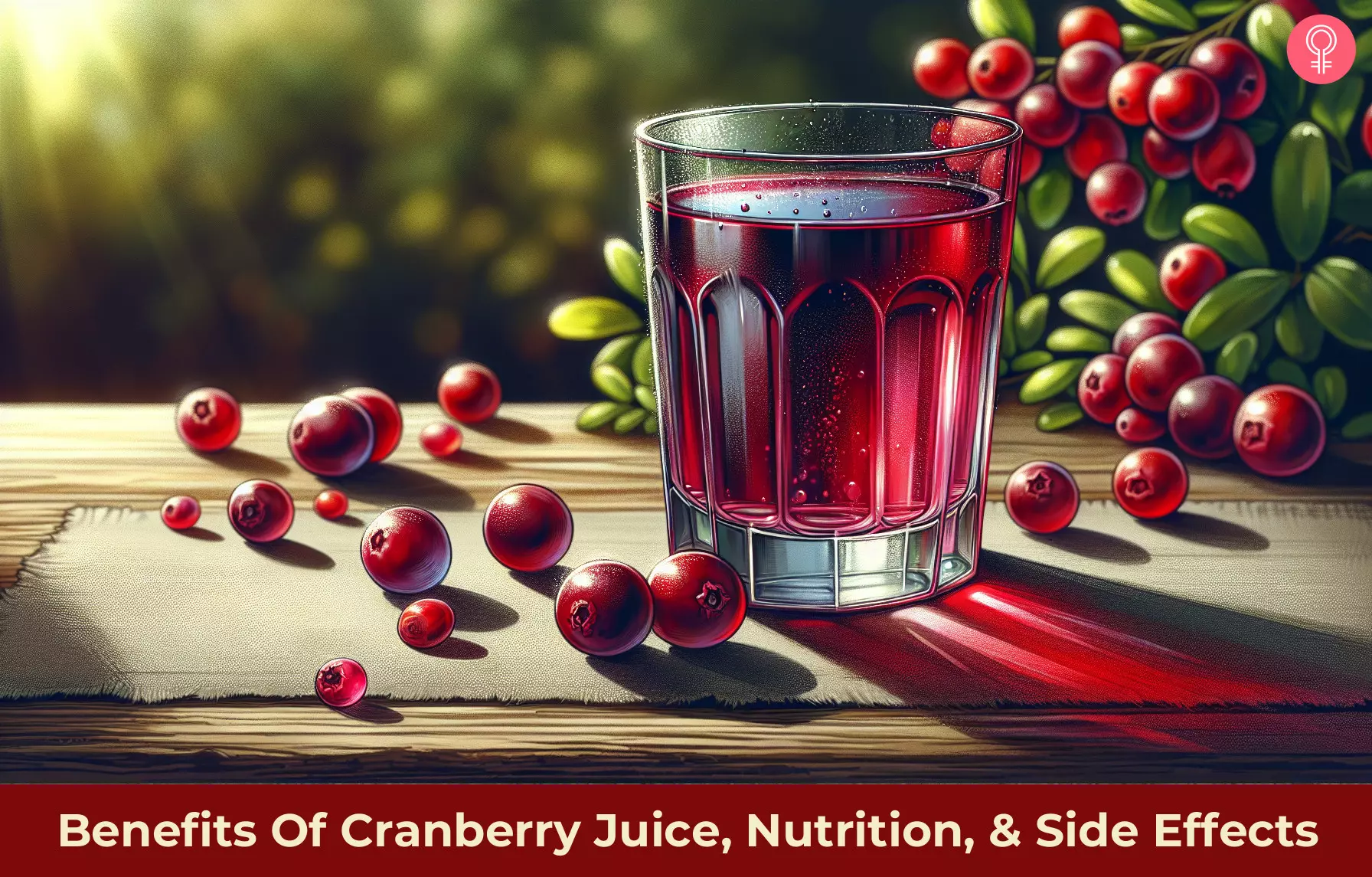
Image: Dall·E/StyleCraze Design Team
Learn how to make delicious cranberry juice at home. Protect your heart and improve your overall health with an easy recipe from the video below.
References
Articles on StyleCraze are backed by verified information from peer-reviewed and academic research papers, reputed organizations, research institutions, and medical associations to ensure accuracy and relevance. Read our editorial policy to learn more.
- “Effects of cranberry juice consumption on vascular…” The American Journal of Clinical Nutrition, US National Library of Medicine.
- “Cranberry” Health Encyclopedia, University of Rochester Medical Centre.
- “Cranberry juice for urinary tract infection in children” Official Publication of The College of Family Physicians of Canada, US National Library of Medicine.
- “Cranberry juice induces nitric oxide-dependent…” Journal of Medicinal Food, US National Library of Medicine.
- “Compounds in cranberry may have heart…” News, University of Wisconsin-Madison.
- “Cranberry Juice Can Boost Heart Health” United States Department of Agriculture, Agricultural Research Service.
- “Give Thanks for the Cranberry…” Newsroom, University of Rochester Medical Centre.
- “Influence of cranberry juice on the urinary risk factors for…” Upper Urinary Tract, British Journal of Urology (BJU) International.
- “Cranberry extract attenuates hepatic inflammation in…” Author manuscript, HHS Public Access, US National Library of Medicine.
- “Cranberries and Their Bioactive Constituents in Human Health” Advances in Nutrition: An International Review Journal, Plants for Human Health, NC State University.
- “Cranberry juice decreases disease activity in…” Nutrition, US National Library of Medicine.
- “Research backs cranberries for preventing urinary tract…” Harvard Women’s Health Watch, Harvard Health Publishing, Harvard Medical School.
- “Cranberry-derived proanthocyanidins prevent formation of…” Journal of Antimicrobial Chemotherapy, US National Library of Medicine.
- “Favorable glycemic response of type 2…” Journal of Food Science, US National Library of Medicine.
- “The effects of cranberry juice on serum glucose…” Journal of Research in Medical Sciences, US National Library of Medicine.
- “WPI Research Shows How Cranberry Juice…” News & Events, Worcester Polytechnic Institute.
- “Antioxidant Effects of Cranberry Powder in Lipopolysaccharide…” Preventive Nutrition and Food Science, US National Library of Medicine.
- “Ivana Visnjic: The Best Drinks for Weight Loss” Scalar Summer Institute, University of Southern California.
- “Impact of Cranberries on Gut Microbiota and Cardiometabolic…” Advances in Nutrition, US National Library of Medicine.
- “Stomach Flu – What to Do?” BuckMD Blog, The Ohio State University.
- “Cranberry juice constituents affect influenza…” Antiviral research, US National Library of Medicine
- “High molecular weight constituents of cranberry…” Planta Medica, US National Library of Medicine.
- “Consumption of cranberry polyphenols enhances human γδ-T…” Nutrition Journal, US National Library of Medicine.
- “Cranberries (Vaccinium macrocarpon) and Cardiovascular Disease Risk Factors (Vaccinium macrocarpon) and Cardiovascular Disease Risk Factors” Special Article, Nutrition Reviews, National Agricultural Library Digital Collections, USDA.
- “Cranberry” National Center for Complementary and Integrative Health, National Institutes of Health.
- Suspected Interaction of Cranberry Juice Extracts…” Cureus., US National Library of Medicine.
- “Cranberry” Monograph, University of Colorado Denver.
- “Melatonin Is a Potential Target for Improving Post-Harvest Preservation of Fruits and Vegetables” , US National Library of Medicine.
- “New perspectives on the role of melatonin in human sleep, circadian rhythms and their regulation” , US National Library of Medicine.
Read full bio of Temple Stewart
- Jesse Feder, RDN/LDN, is a Clinical Dietitian at the Memorial Regional Hospital. He is also a certified by the American College of Sports Medicine as a personal trainer (ACSM-CPT) and the National Strength and Conditioning Association as a Certified Strength and Conditioning Specialist (NSCA-CSCS).
 Jesse Feder, RDN/LDN, is a Clinical Dietitian at the Memorial Regional Hospital. He is also a certified by the American College of Sports Medicine as a personal trainer (ACSM-CPT) and the National Strength and Conditioning Association as a Certified Strength and Conditioning Specialist (NSCA-CSCS).
Jesse Feder, RDN/LDN, is a Clinical Dietitian at the Memorial Regional Hospital. He is also a certified by the American College of Sports Medicine as a personal trainer (ACSM-CPT) and the National Strength and Conditioning Association as a Certified Strength and Conditioning Specialist (NSCA-CSCS).
Read full bio of Swathi Handoo
Read full bio of Ravi Teja Tadimalla
Read full bio of Himanshi Mahajan





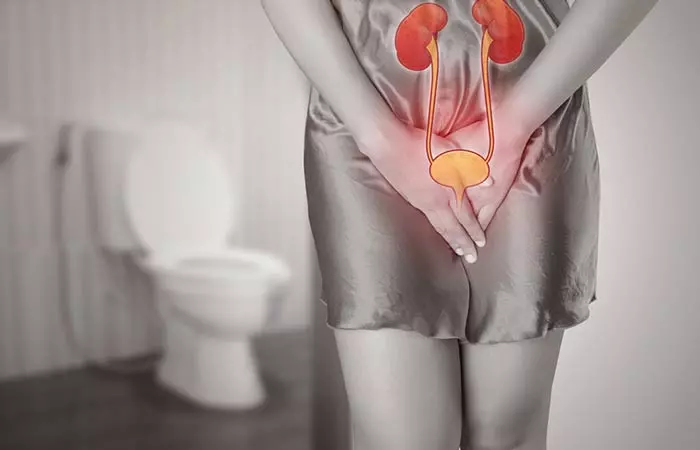

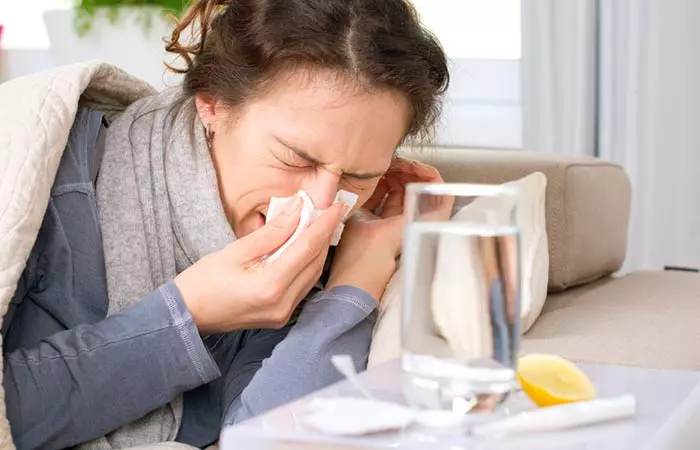
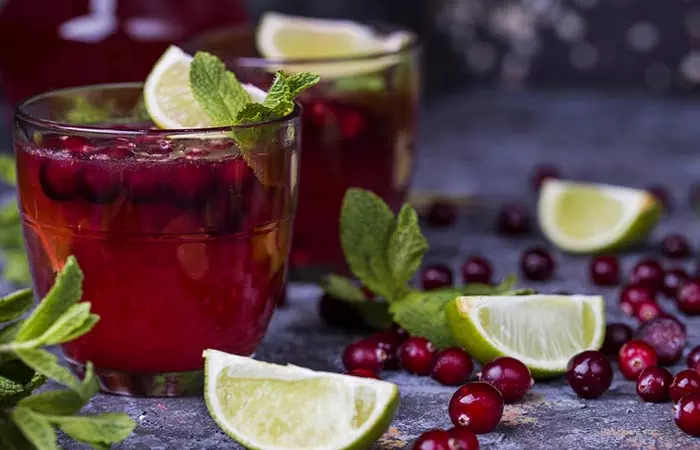
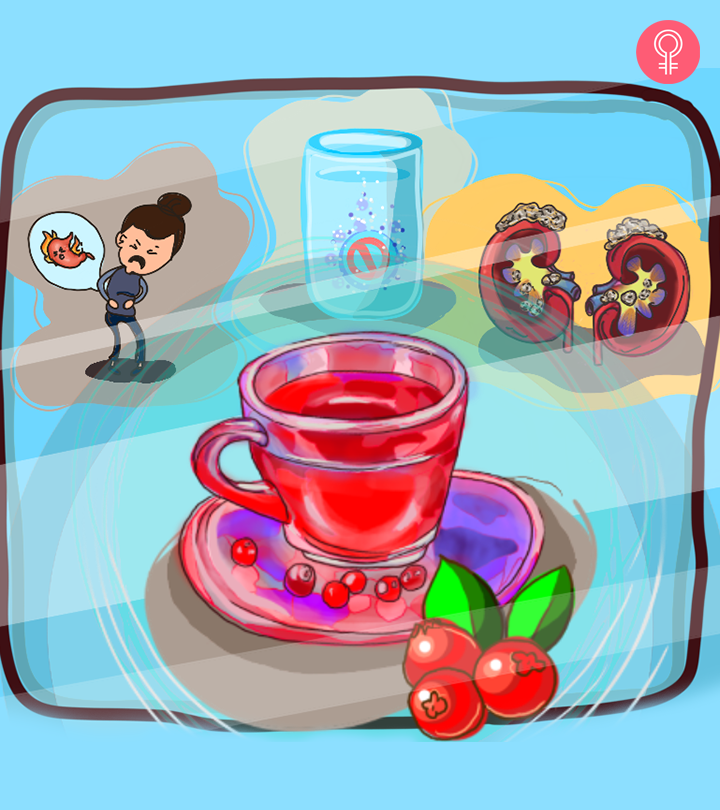
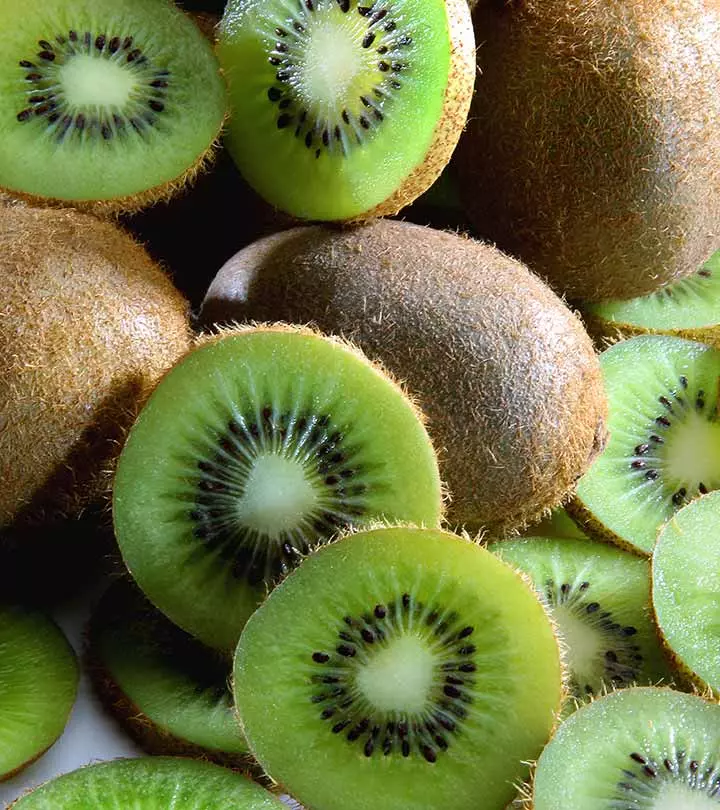
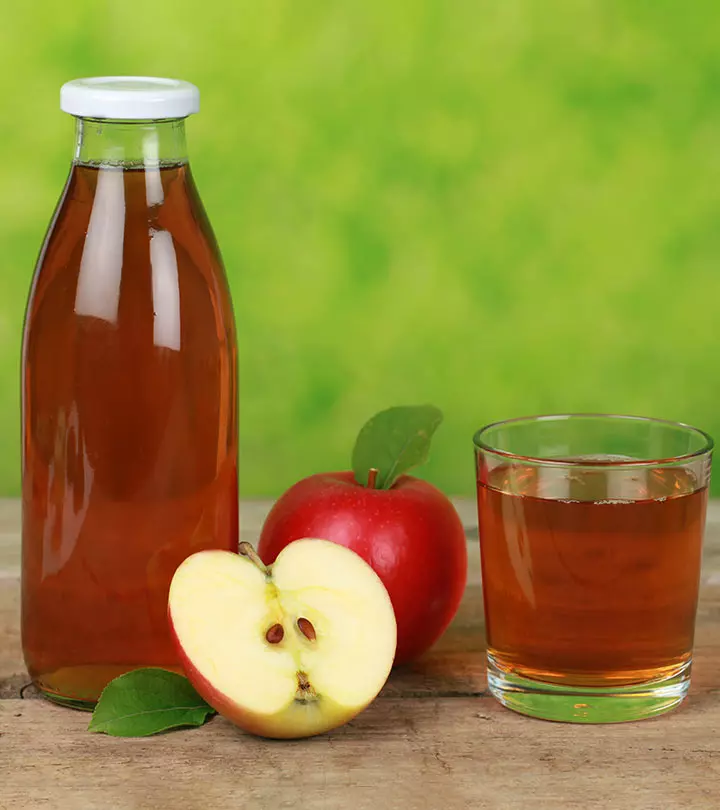
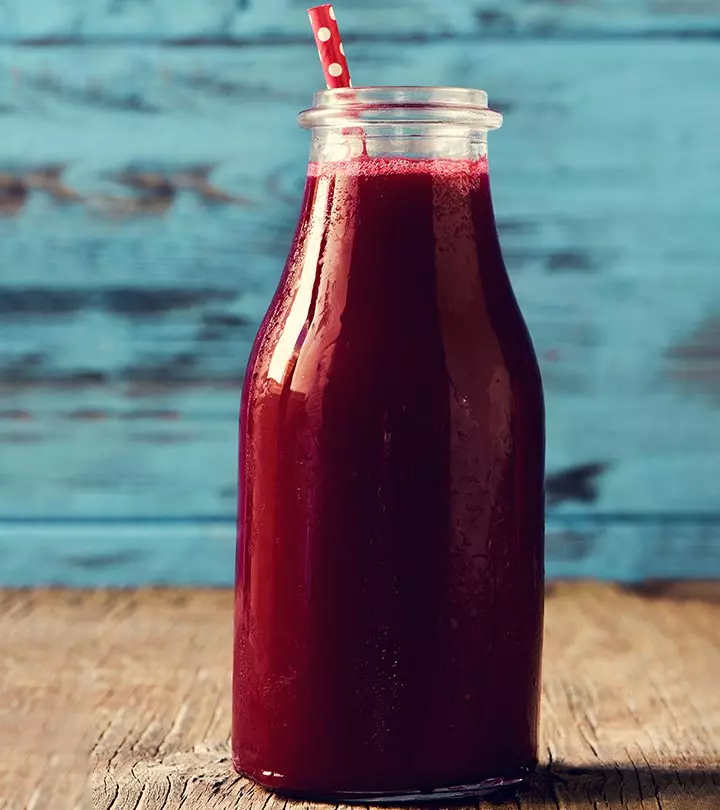
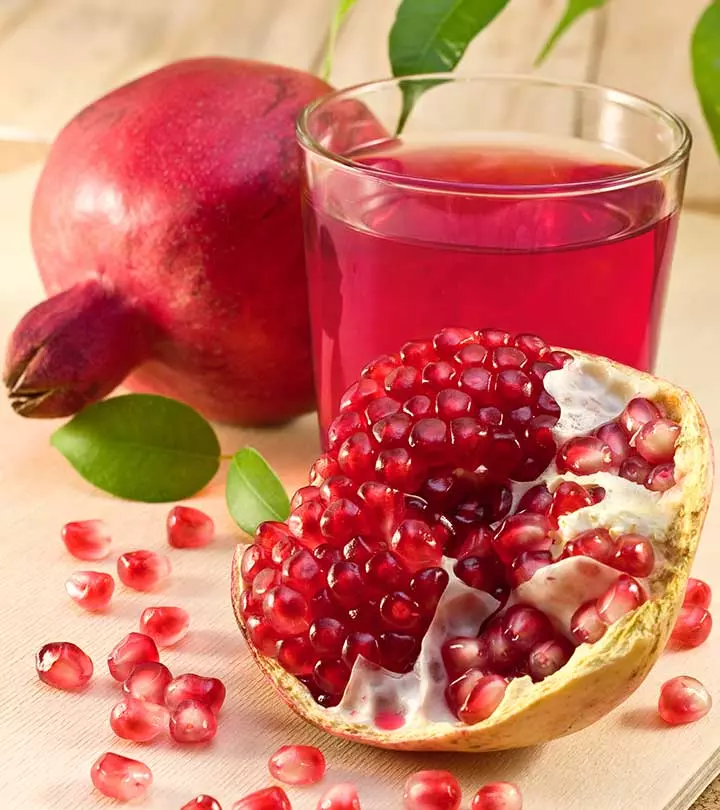
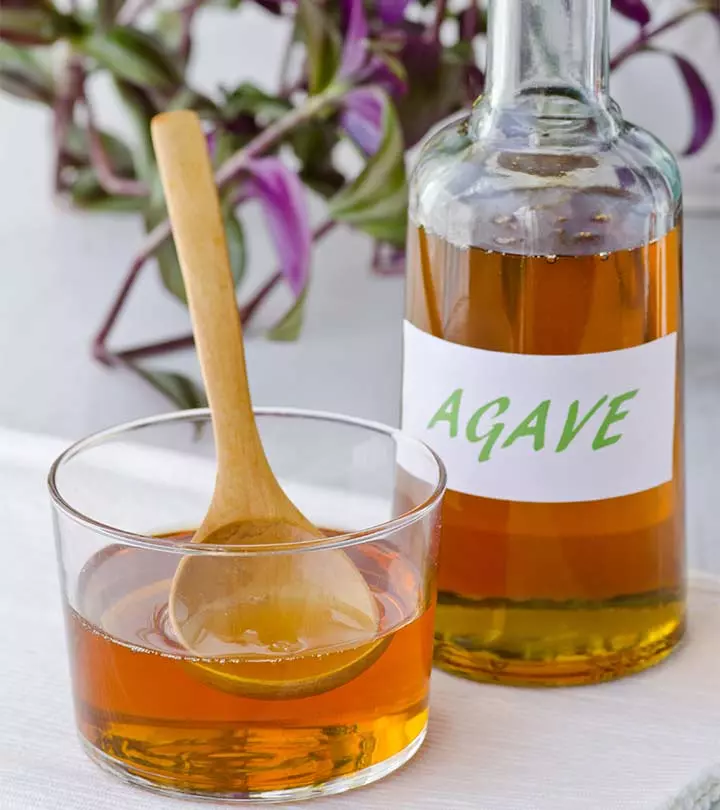
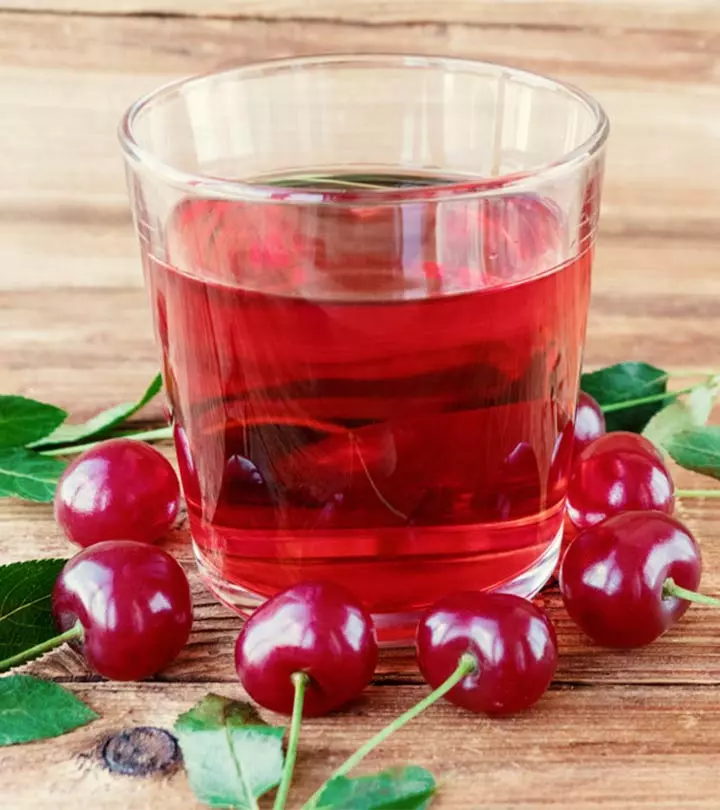
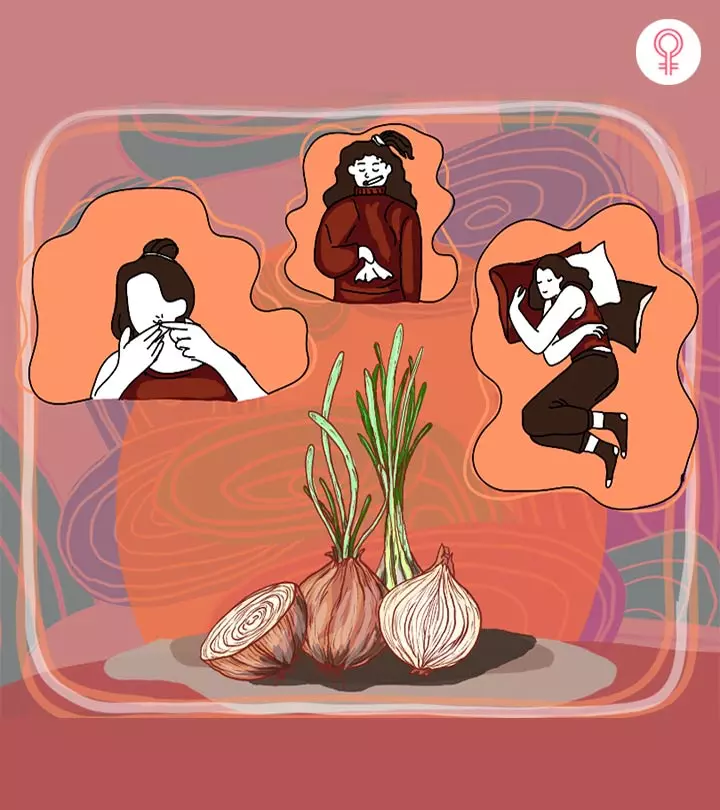
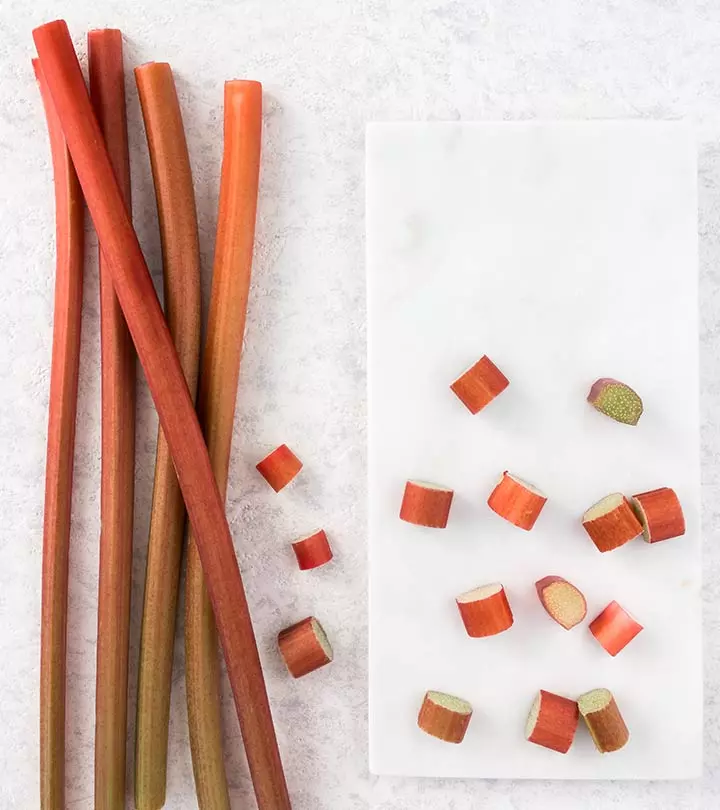
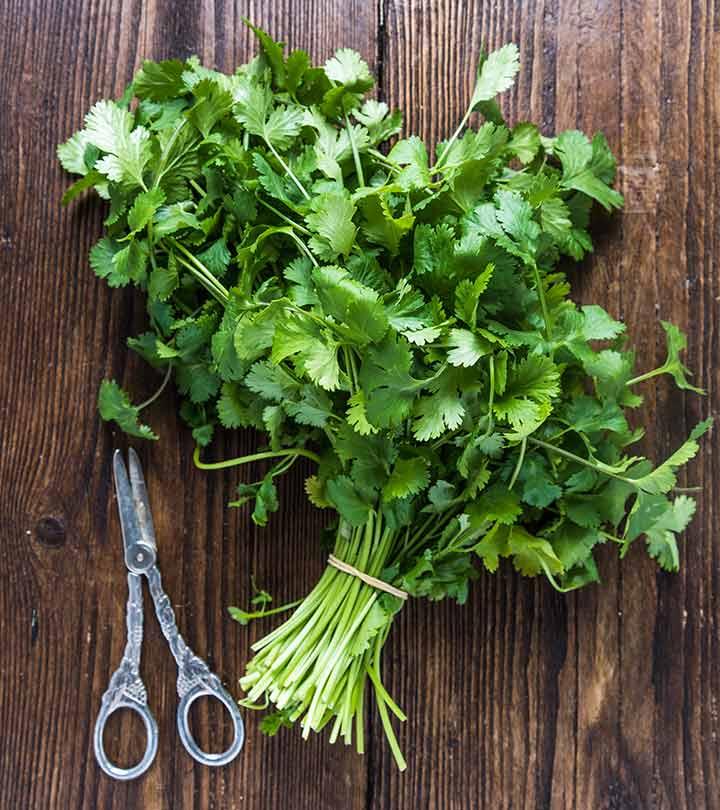


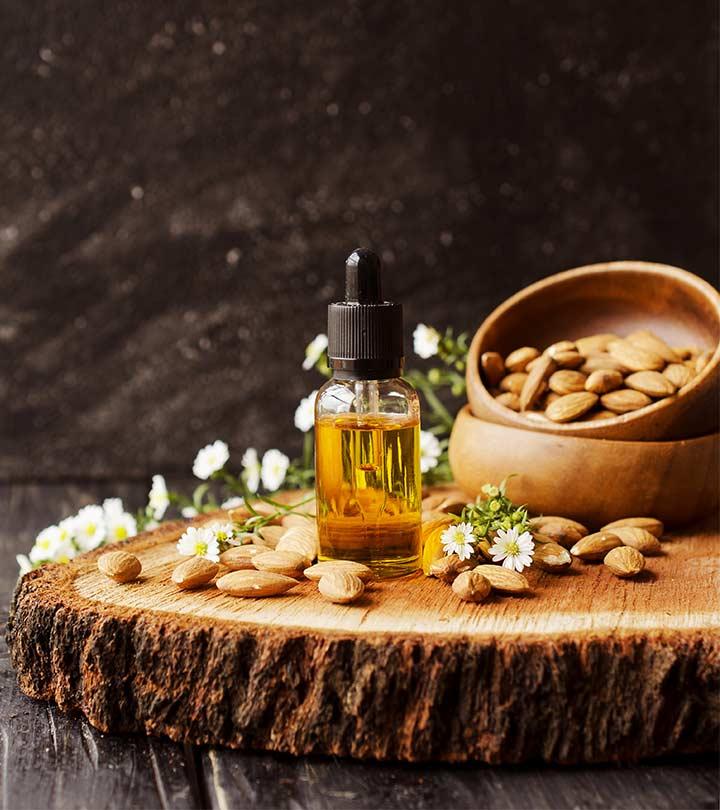
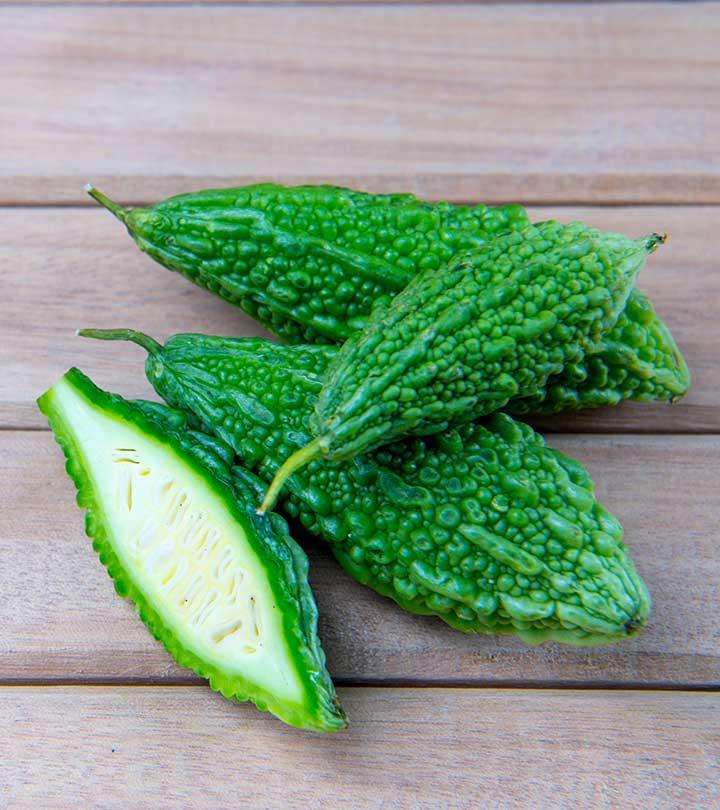
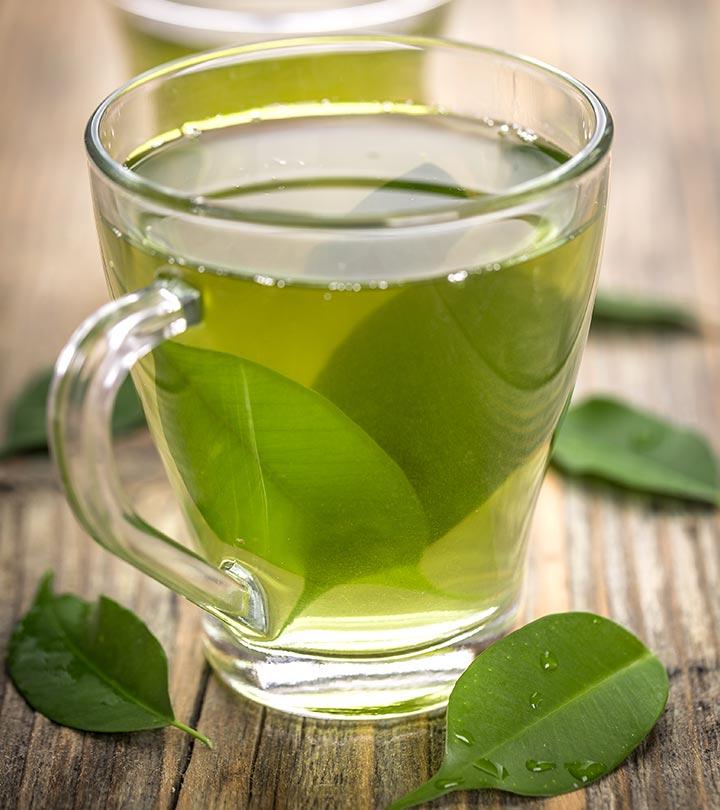
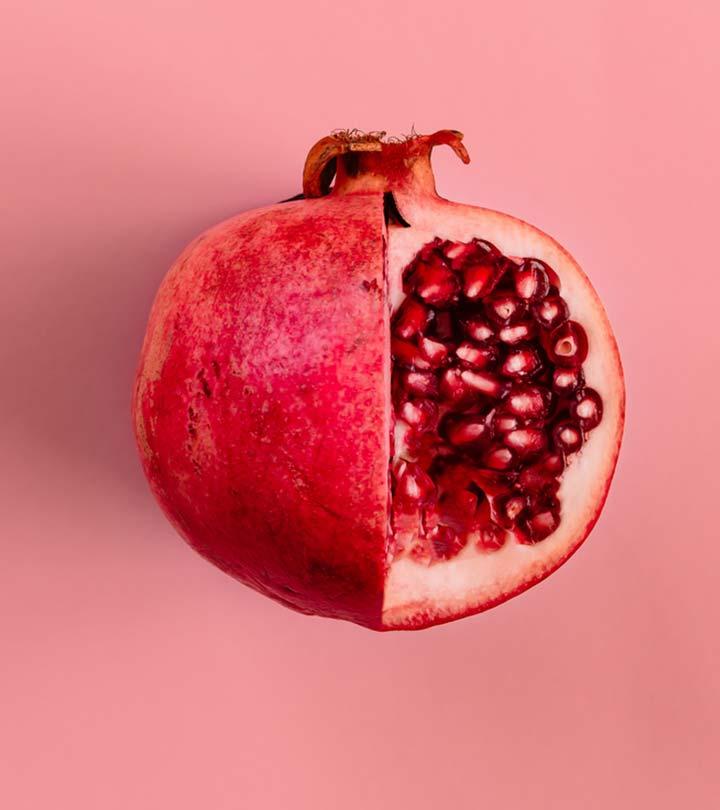
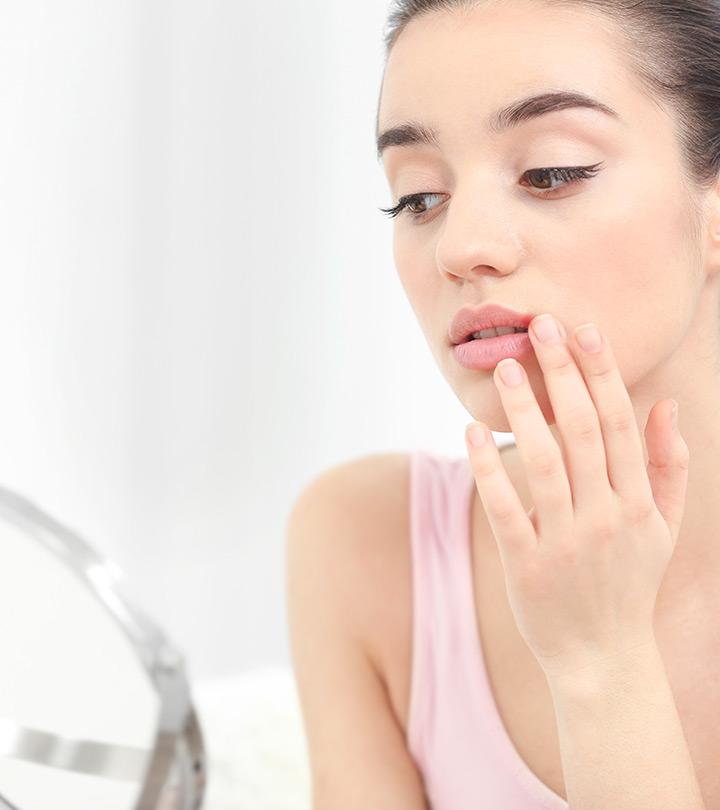
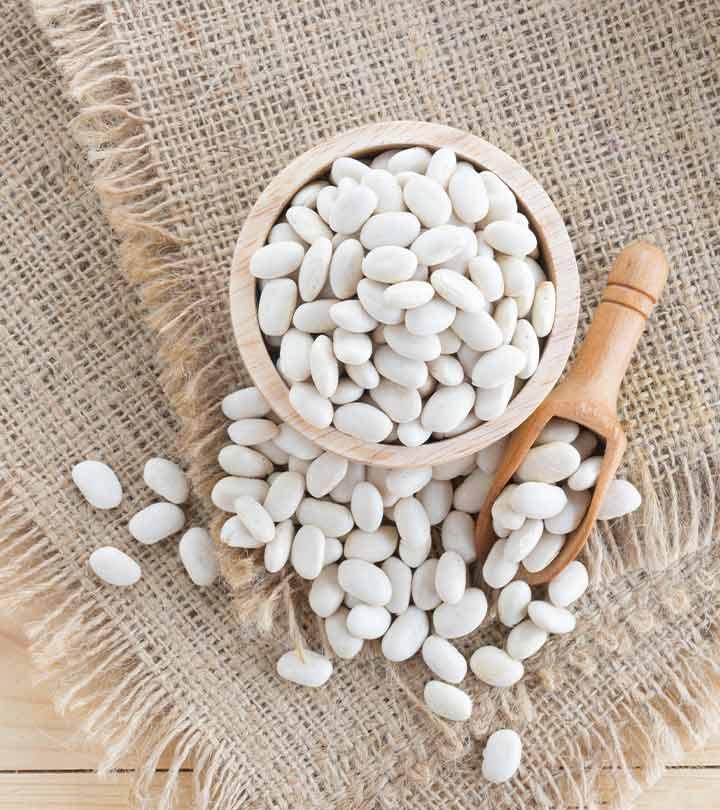
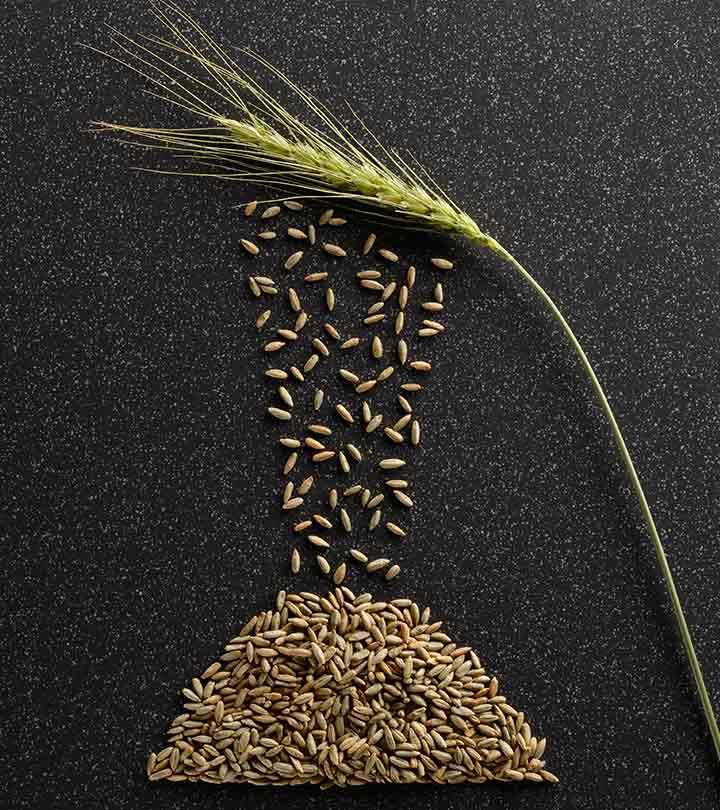
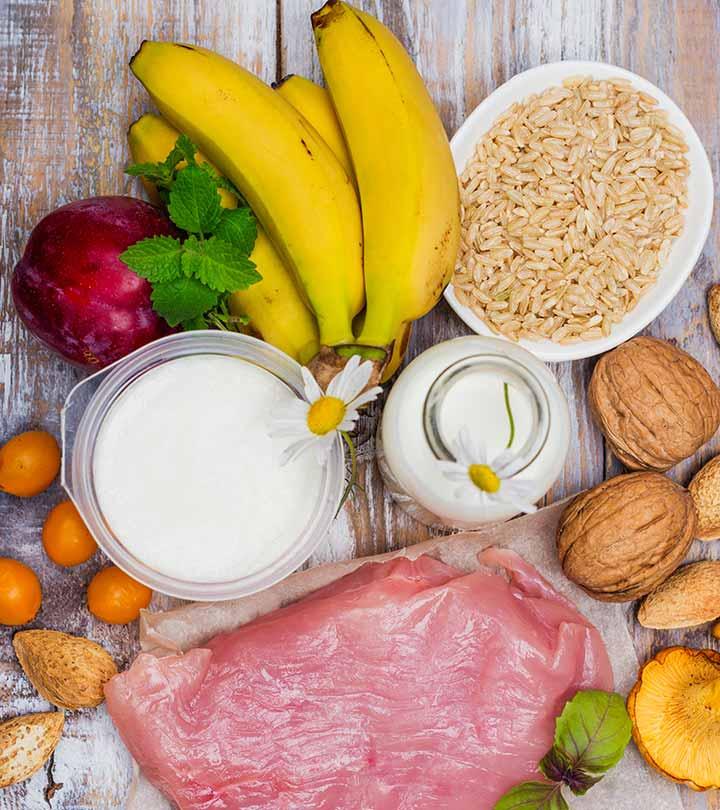

Community Experiences
Join the conversation and become a part of our empowering community! Share your stories, experiences, and insights to connect with other beauty, lifestyle, and health enthusiasts.